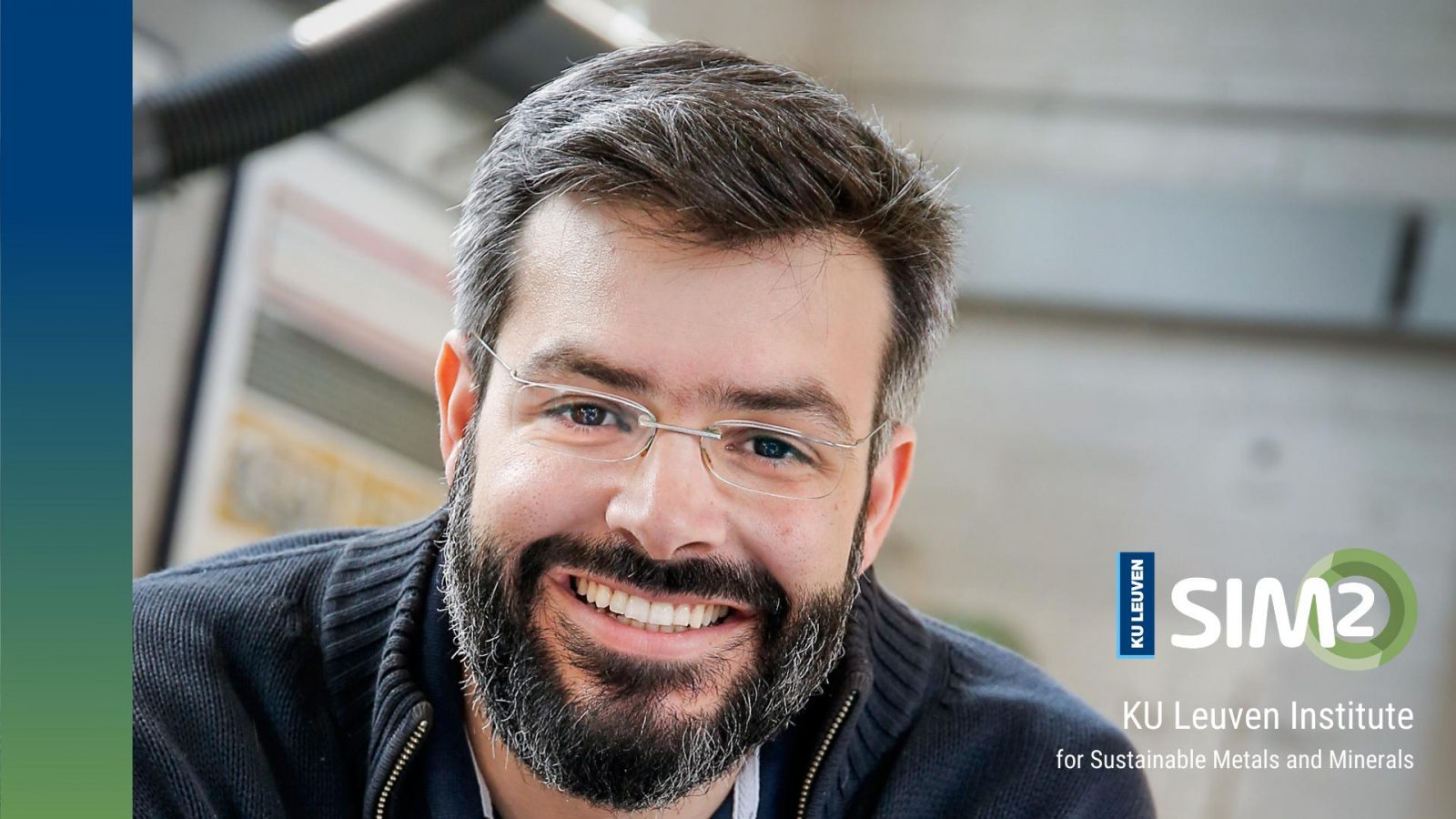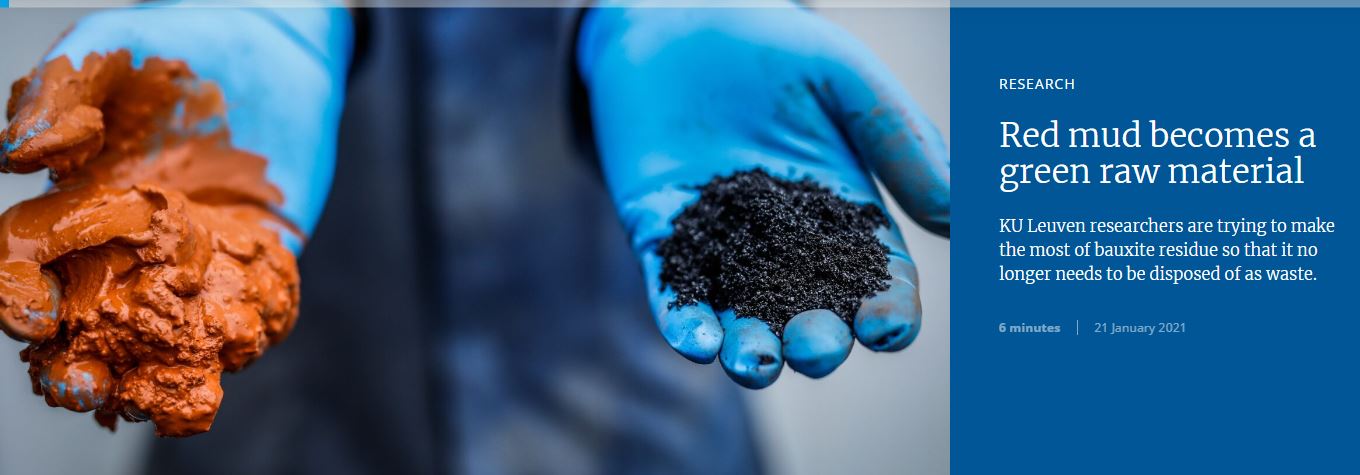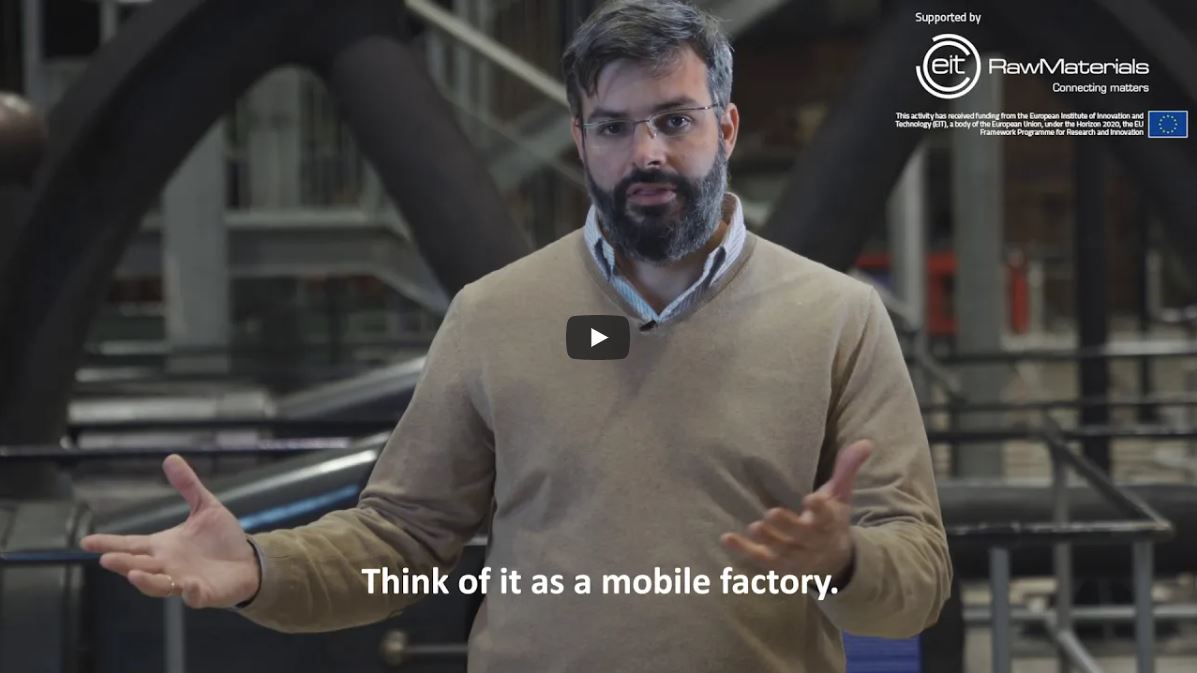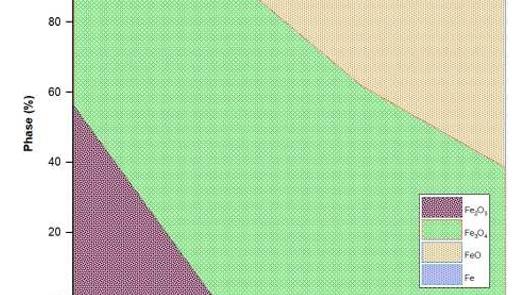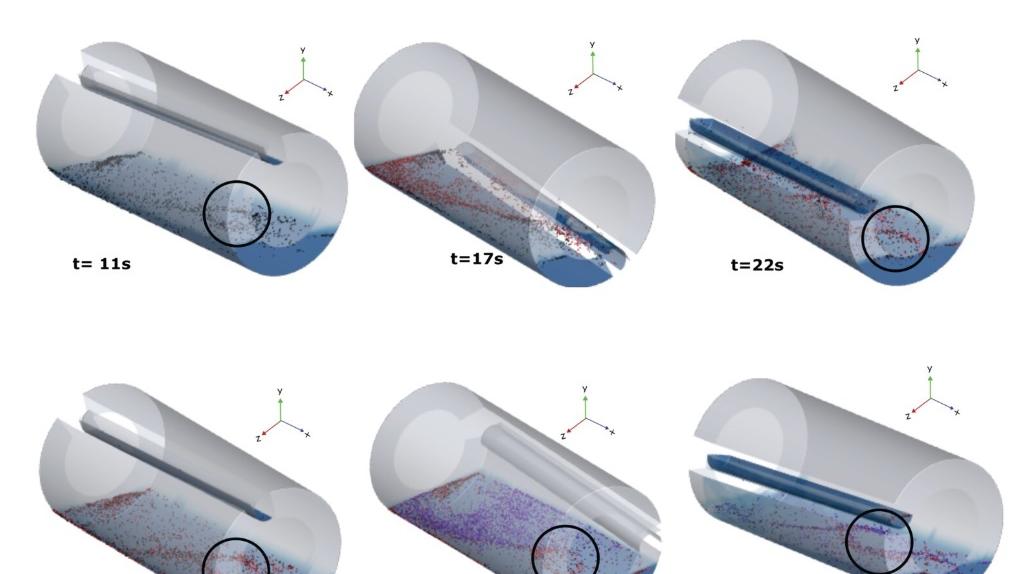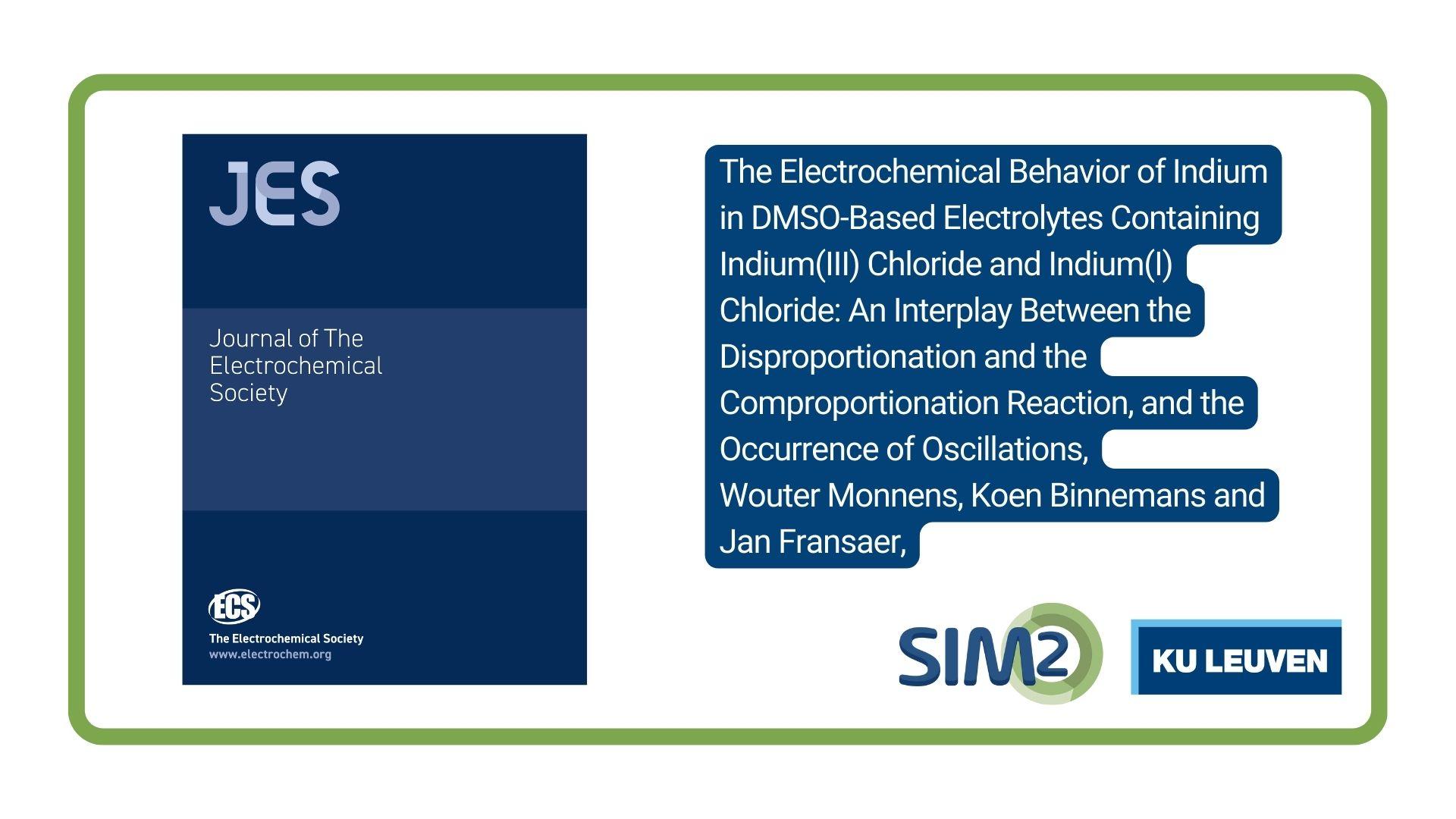Prof. Yiannis Pontikes’ burning desire is to convert bauxite residue (et al.) into green building materials. As one of SIM²‘s founding fathers he passionately leads the SREMat Group (Dept. Materials Engineering, KU Leuven). In this lively SIM² interview you get to know more about his research and upscaling activities and his philosophical view on the transition to a low-carbon, circular economy and the role of industrial process residues therein. Make no mistake: given his impressive entrepreneurial and leadership skills, Prof. Yiannis Pontikes is one to look out for!
[Interview: Peter Tom Jones; Credits photos: © Rob Stevens, KU Leuven]
During the past years the European Commission has expressed its ambition to make the EU climate neutral. Likewise, the Circular Economy Action Plan wants to address the fact that the construction sector is responsible for over 35% of the EU’s total waste generation, while greenhouse gas emissions from material extraction, manufacturing of construction products, and construction and renovation of buildings account to 5-12% of total greenhouse gas emissions. How is your research aligned with these developments?
Our research in SREMat is on binders and materials that are more sustainable than the ones produced today. We use primarily secondary resources such as metallurgical slags and sludges. And we develop processes of low environmental impact. Considering the above, I feel my group’s vision is aligned with the EU (and UN…) goals. We try to focus on how to get it done, and I see the EU Commission as the enabler for this transition. We need resources and we are fortunate to have this support.
Do you believe a Circular Building sector will come to fruition in Europe?
It is happening already and I feel it will become more and more the default scenario in the future. We still need to agree on the terminology, as this will then set the expectations. For me, circular buildings refer predominantly to buildings designed-for-deconstruction with designed-for-recycling elements as the back-up scenario. In the first instance, the building element is reused as such. In the second, it is demolished and then enters a process of delivering the same building element. And it is expected that this process is more sustainable that the comparable one where virgin raw materials are used!
What is your advice to EU Policymakers to speed up the transition in the building sector?
I don’t feel competent to advise EU policymakers, and there is an internal debate I have on what is ultimately the best way. See for example how the electric cars came to our lives; this was more about choices of individual consumers and less about state incentives. This makes me wonder why things are not advancing so fast in other sectors. It might simply be that we don’t have yet the attractive, “green” examples. Thus, what I would like us to do, policymakers and individuals, is to communicate these best examples. This might already be powerful enough for a bottom-up mentality change: where you see that something really works and, on top of that, you also have this personal satisfaction that your choice was the best possible one for the environment.
Have there been any game-changing moments in your research career? I am referring to moments which made you fundamentally rethink your research focus and/or strategy?
I can think of at least 3. The first one was when I realised that some plants dispose bauxite residue (red mud) in the sea. And the realisation, or a reminder, that what is legal, ethical, moral (or environmentally-sound) is not the same. Not only as terms, but also in what they mean to each one. Till we reach postmodernism, with everything relative, open to subjectivism and interpretation…
The second was while I was in the US for a research visit, where I realised that bauxite residue and copper slag mirror each other in terms of chemistry. The only real difference is that one is mostly crystalline with Fe3+, the other amorphous with Fe2+. I am simplifying things, but I am basically saying that if you thermally process bauxite residue, you end up with a copper slag. And that slag, is at least one of the cements of the future.
We have coined this cement "Extraordinary Leuven Cement" (ELCE).
(The reader is refferred to the featured article “Red mud becomes a green raw material”, published as with Yiannis Pontikes in the Series “KU Leuven Stories – The Power of Wonder”, 21-1-2021).
The third realisation is that the scientific impact is not always aligned with the real-life impact. Our most science-deep papers simply reveal there is so much more to do. On the contrary, there are more engineering papers that reveal so much without being able to answer why. This is a reminder that we need to stay humble and open.
Figure: Yiannis Pontikes and Tobias Hertel featured in a KU Leuven Story “The Power of Wonder”. On the photo Yiannis Pontikes is holding bauxite residue (red mud) on his right hand and bauxite residue-rich cement on his left hand (Credits photo: © Rob Stevens, KU Leuven)
Which paper of yours are you particularly pleased with?
I like them all, each one has a value for me. It is not that the scientific value is the same for all, some are more deep, revealing or eye-opening than others. But each paper has been associated with a team of people and hopes, and it is this emotional journey that I carry with me. Ultimately, it is the face of someone being happy and proud because he/she reached a milestone.
You have been very active in the domain of upscaling of your research. Recently, you initiated such programmes in the Lovenjoel KU Leuven facilities? Can you tell us more about your plans?
I have been always trying to see my research implemented, changing something in a positive way. Upscaling seemed quite logical after we had reached a level of confidence that we know what we are doing. It allows you to see your research better, it is a magnifying lens on your errors. And at the same time, it helps you identify the critical items and focus on them.
With the erection of EIT KIC RawMaterials, this became easier to pursue in the EU, and when Transfarm became the KU Leuven upscaling facility, things fell beautifully into place, like a puzzle that starts shaping up.
We still have a long way to go, but there is a vision. And for me, that is to have a hub where “we practice what we preach” and by education and dissemination we participate in the dialogue on how to do things better. If that can become the nursery home for start-ups, even better.
Figure: Yiannis Pontikes in the EIT RawMaterials video on his SREMAT pilot plant consisting of four mobile units, each one in a 20 ft bespoke container, transforming bauxite residue and slags into final constructions products. (Credits video: EIT RawMaterials) [https://www.youtube.com/watch?v=SGafzcMIVVc]
Likewise, you have been strongly driven to contribute to the field of sustainable metallurgy. You have taken the initiative to help setting up the Journal of Sustainable Metallurgy, with the support of TMS and Springer. Any wonderful plans in the pipeline for this new journal?
We recently became 5 years old! And my only wish is to continue, provided we are relevant and something more than a journal. In that direction, I see us more as the forum of a community that wants to speak and share the news. And by doing so, accelerating the transition.
So, I would be expecting more interaction with conferences, industrial and academic associations and perhaps embarking on more creative ways of communication. These can be videos, workshops, blogs and other tools. I feel we need to touch base with today’s media. Keep in mind that the journal has also been an exercise of “what if” and “why not”. I mean, we wanted to bring the journal some of the values we cherish, for instance, we have Editors from all over the world as we want to be open to different views and also because sustainability is a challenge we all need to work on together. With that in mind, we are open to any new ideas that seem “right”.
On a more personal level, how is it for a Greek Professor to live in a fairly dark country like Belgium? Do you feel any connection with the “locals” here? By the way, I asked your SIM² colleague and fellow countryman Prof. Dimitrios Sakellariou the same question…
I might have got used to the weather, but it feels less gloomy than it used to be! Statistics also speak for a changing weather, I guess you know where I am taking this… But somehow it has not been much on my mind.
Young kids home also help you focus on the important things in life, e.g. getting some sleep at night!
Yiannis and the “locals”… I feel connected in the sense I have enough locals I know we sincerely care for each other and we are happy with each other’s happiness. It is different than a Greek setting, but people are people, you just need to go through the first layer of doubting for each other before trust starts growing.
Pure hypothetically, given your busy agenda, If you had plenty of time, what would you do?
I would take my family and go to south Crete. There is a restaurant by the sea, in the middle of nowhere. I would then stay there, till I could hear the waves and the wind. I would then try to understand why I end up with this busy agenda! And I would try to refocus on the most important things in life.
I feel the busy agenda and the to-do’s is creating too much noise and we end up as mice in a turning wheel.
Once I am done, I would continue with my life as today. Time availability is great, but I need also resources to get things done! A note: I try to do this journey also from Leuven, but having 5 senses aligned with the surroundings helps. And yes, a bit of food from that restaurant also brings a smile.
What is the strangest talent you have?
This has been the toughest one so far! Is lack of talent a talent on its own? I think I am an overall good (decent?)-performer, more like the conductor but not really the first-violin. Wish I had something exceptional about Yiannis to share!
Thank you for this interview. We wish you all the best in your research and upscaling endeavours. We are looking forward in particular to your activities in Transfarm. Our hope is that other SIM² colleagues will follow your example and get cracking at “upscaling” in Lovenjoel!
Biography Prof. Yiannis Pontikes
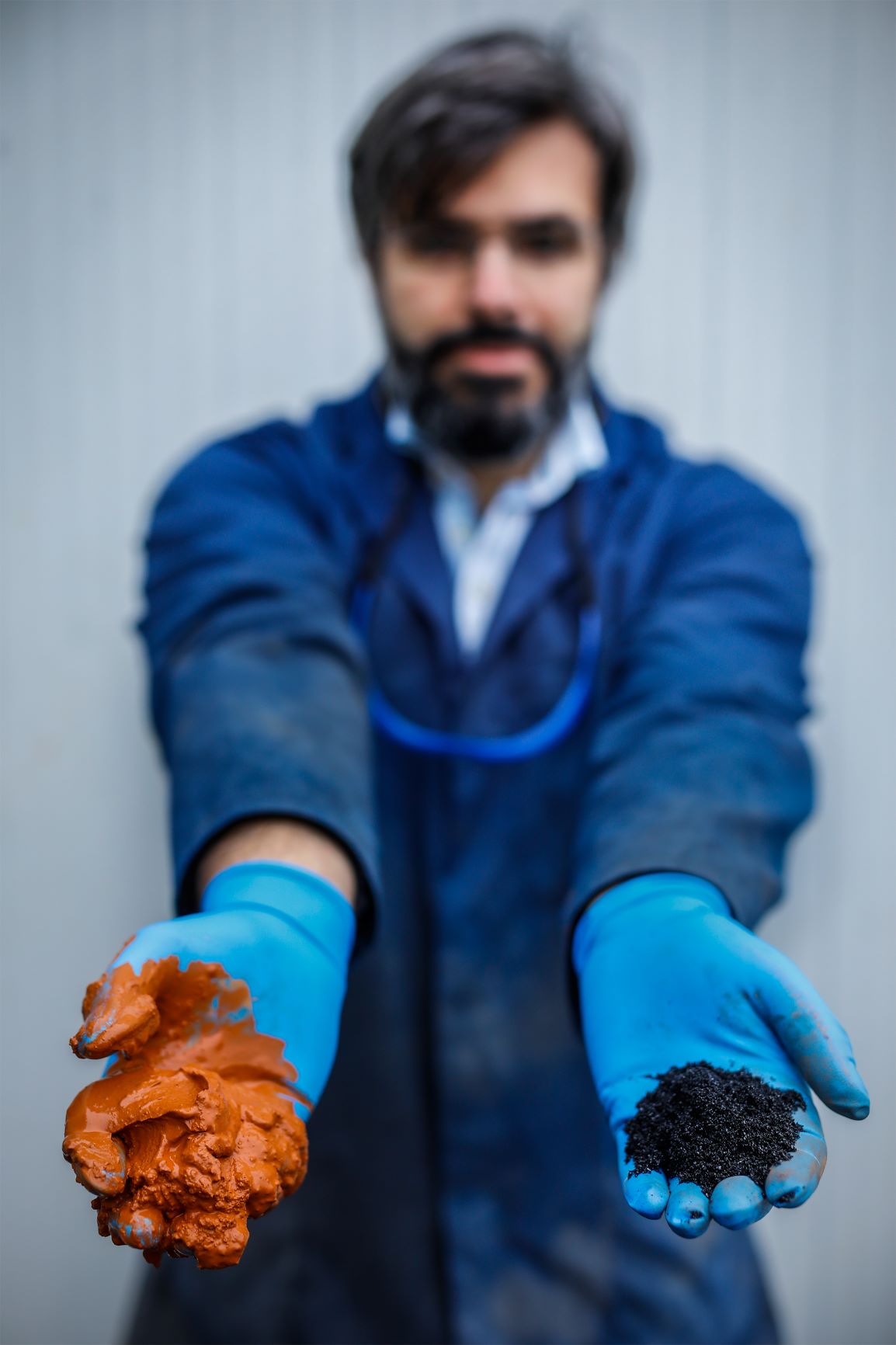
Figure: Yiannis Ponitkes (Credits Photo: (C)Rob Stevens, KU Leuven)
Yiannis Pontikes is a BOF-ZAP associate professor at the Department of Materials Engineering, KU Leuven, Belgium (2016). Prof. Pontikes is leading the Secondary Resources for Engineered Material (SREMat) research group. SREMat has built an expertise on the valorisation of residues towards ceramic, cement and inorganic polymer (geopolymer) formulations, from the level of binder synthesis all the way to full scale prototypes.
The scientific output of SREMat from 2013 onwards exceeds 10 peer-reviewed journal papers a year. Prof. Pontikes has been a co-author in 70 peer-reviewed journal papers, he is currently work package leader or project coordinator in 12 national and international projects (1 H2020, 3 MSCA ETNs, 3 EIT-KIC…) and is participating in different fora and networks.
He is one of the driving forces of SIM², the KU Leuven Institute for Sustainable Metals and Minerals. Prof. Pontikes is in the Scientific Advisory Board of the Waste and Biomass Valorization journal (Springer), and in 2015 was one of the founders of the Journal of Sustainable Metallurgy (TMS; published by Springer), where he serves as the managing editor.
Some of Prof. Yiannis Pontikes’ key papers in the field of upcycling industrial process residues
- T Hertel, Y Pontikes, Geopolymers, inorganic polymers, alkali-activated materials and hybrid binders from bauxite residue (red mud)–Putting things in perspective, Journal of Cleaner Production, 258, 120610, 2020.
- A Peys, L Arnout, B Blanpain, H Rahier, K Van Acker, Y Pontikes, Mix-design parameters and real-life considerations in the pursuit of lower environmental impact inorganic polymers, Waste and biomass valorization, 9 (6), 879-889, 2018.
- T Hertel, B Blanpain, Y Pontikes, A proposal for a 100% use of bauxite residue towards inorganic polymer mortar, Journal of Sustainable Metallurgy 2 (4), 394-404, 2016.
- CR Borra, B Blanpain, Y Pontikes, K Binnemans, T Van Gerven, Recovery of rare earths and other valuable metals from bauxite residue (red mud): a review, Journal of Sustainable Metallurgy, 2 (4), 365-386, 2016.
- K Binnemans, PT Jones, B Blanpain, T Van Gerven, Y Pontikes, Towards zero-waste valorisation of rare-earth-containing industrial process residues: a critical review, Journal of Cleaner Production, 99, 17-38, 2015.
- CR Borra, Y Pontikes, K Binnemans, T Van Gerven, Leaching of rare earths from bauxite residue (red mud), Minerals Engineering, 76, 20-27, 2015.
- Y Pontikes, GN Angelopoulos, Bauxite residue in cement and cementitious applications: current status and a possible way forward, Resources, Conservation and Recycling, 73, 53-63, 2013.
Want to know more about SIM²?
SIM² KU Leuven is the KU Leuven Institute for Sustainable Metals and Minerals (SIM² in short). SIM² is one of the five official KU Leuven Institutes that were endorsed by the KU Leuven Academic Council. SIM² has more than 240 members, coming from a wide range of (interdisciplinary) research groups and departments at KU Leuven.
SIM²’s missions is “to develop, organise & implement problem-driven, science-deep research & future-oriented education, contributing to the environmentally friendly production & recycling of metals, minerals & engineered materials, supporting (…) a climate-friendly, circular-economy”.
- Read more in this featured article in Geniaal.
- Follow SIM² on LinkedIn: https://www.linkedin.com/company/18118889
- Interviews with other SIM² colleagues: https://kuleuven.sim2.be/meet-our-colleagues/



